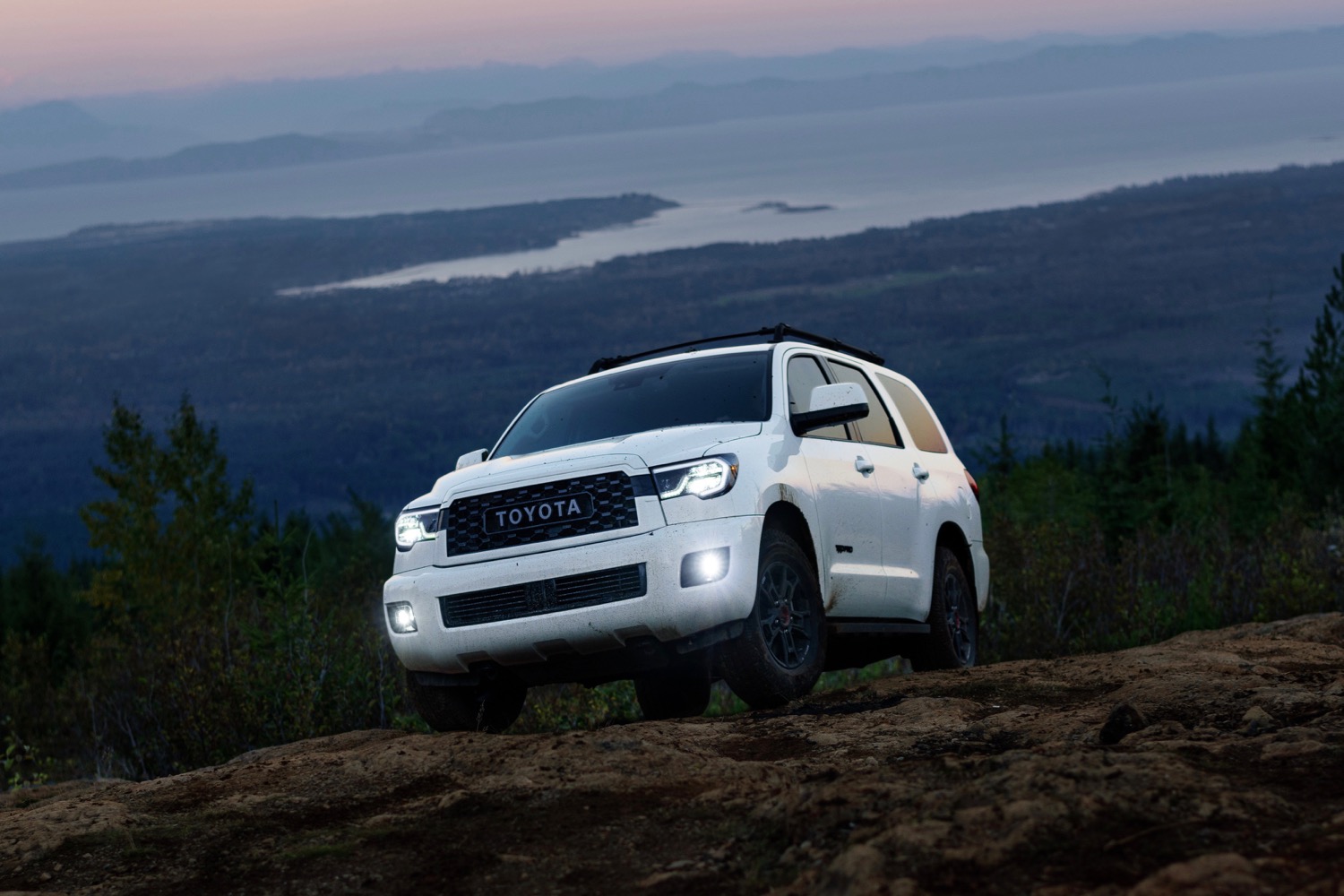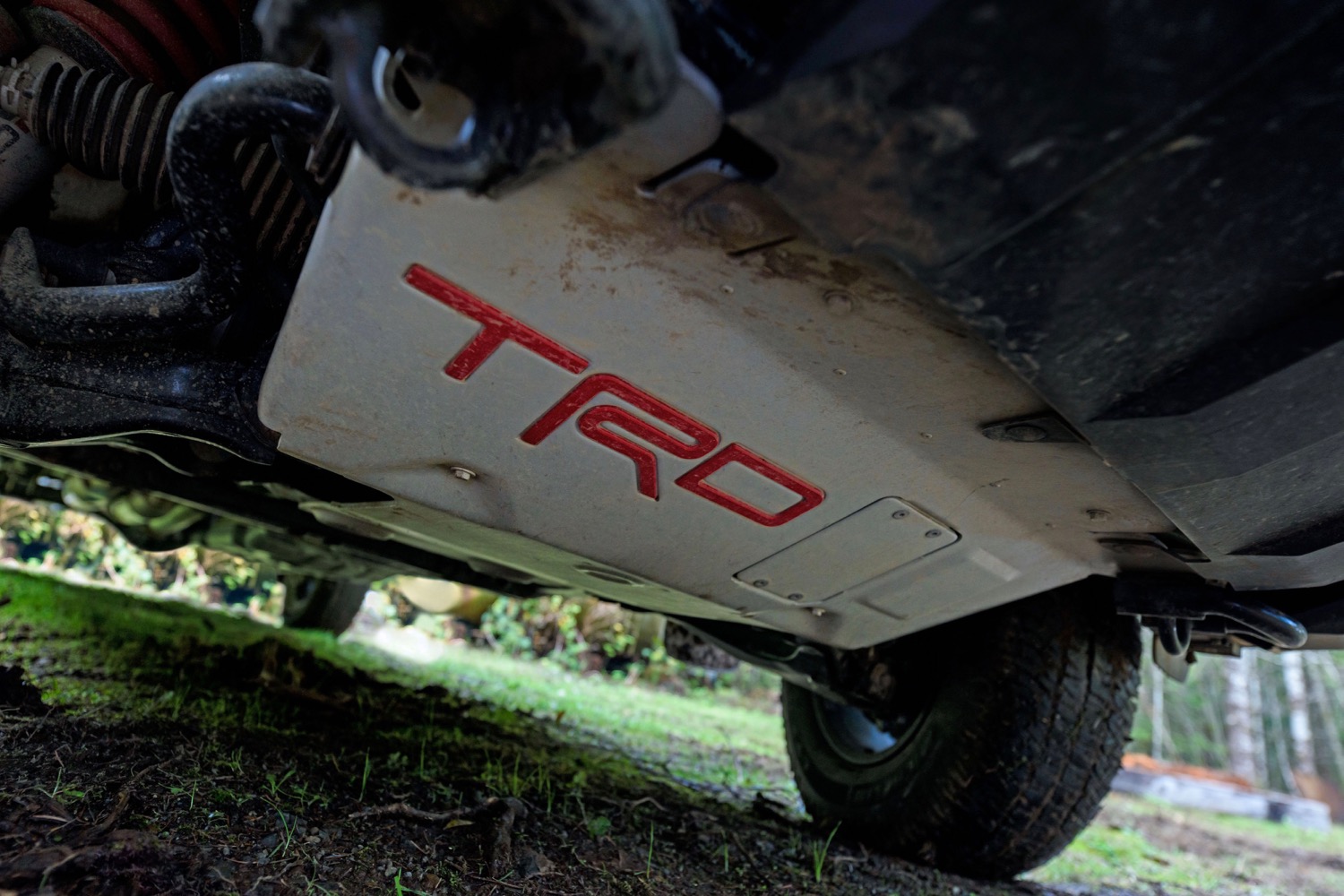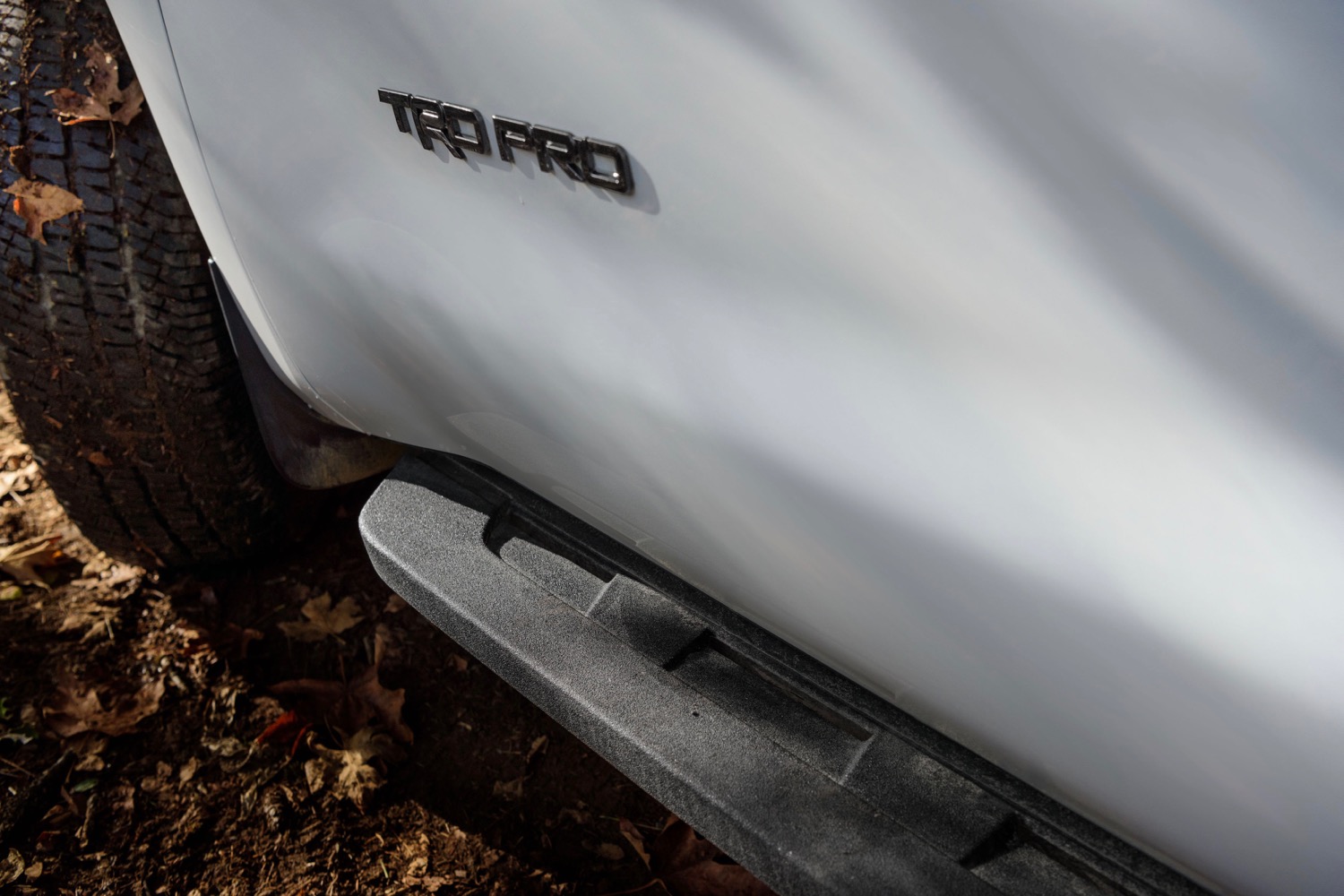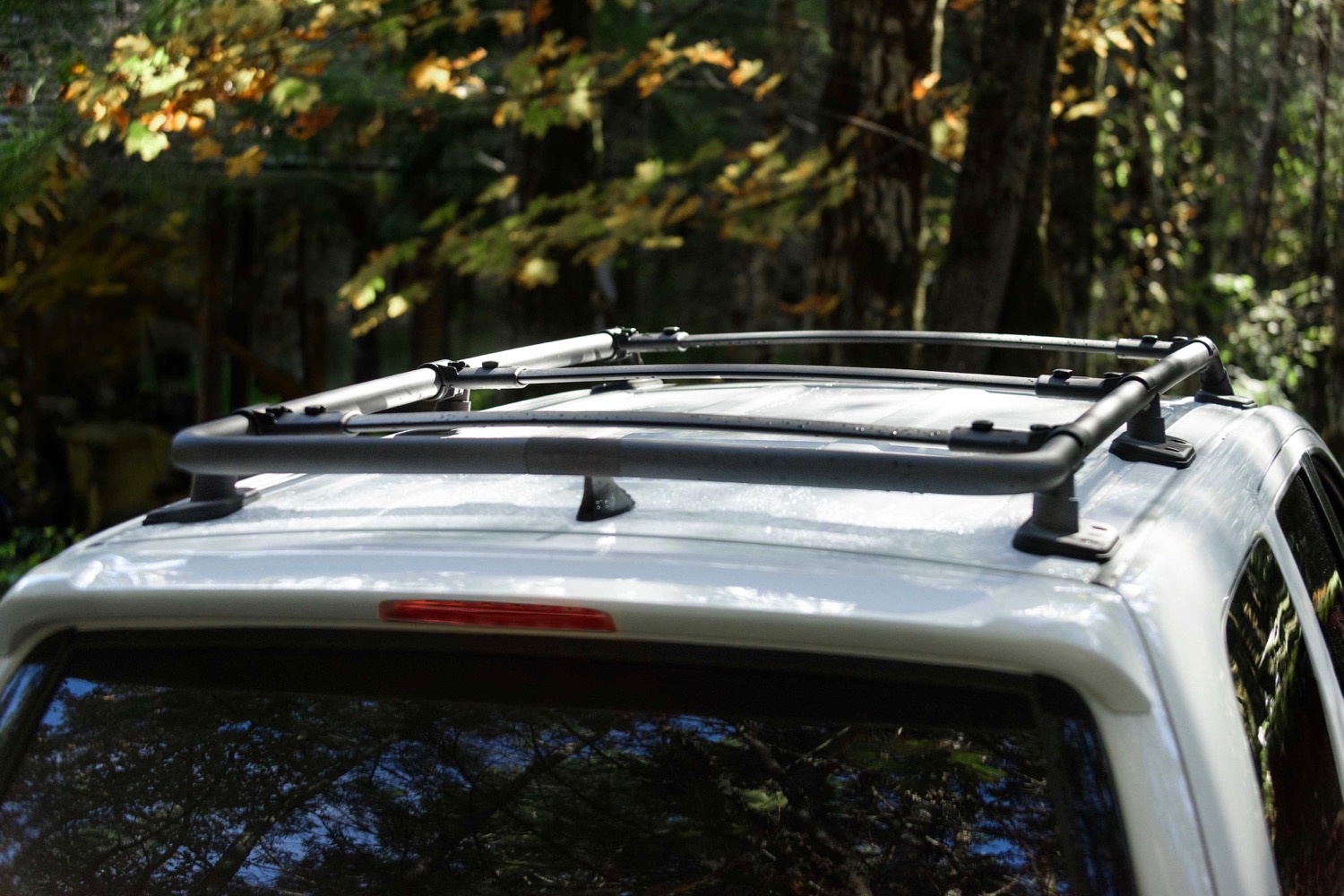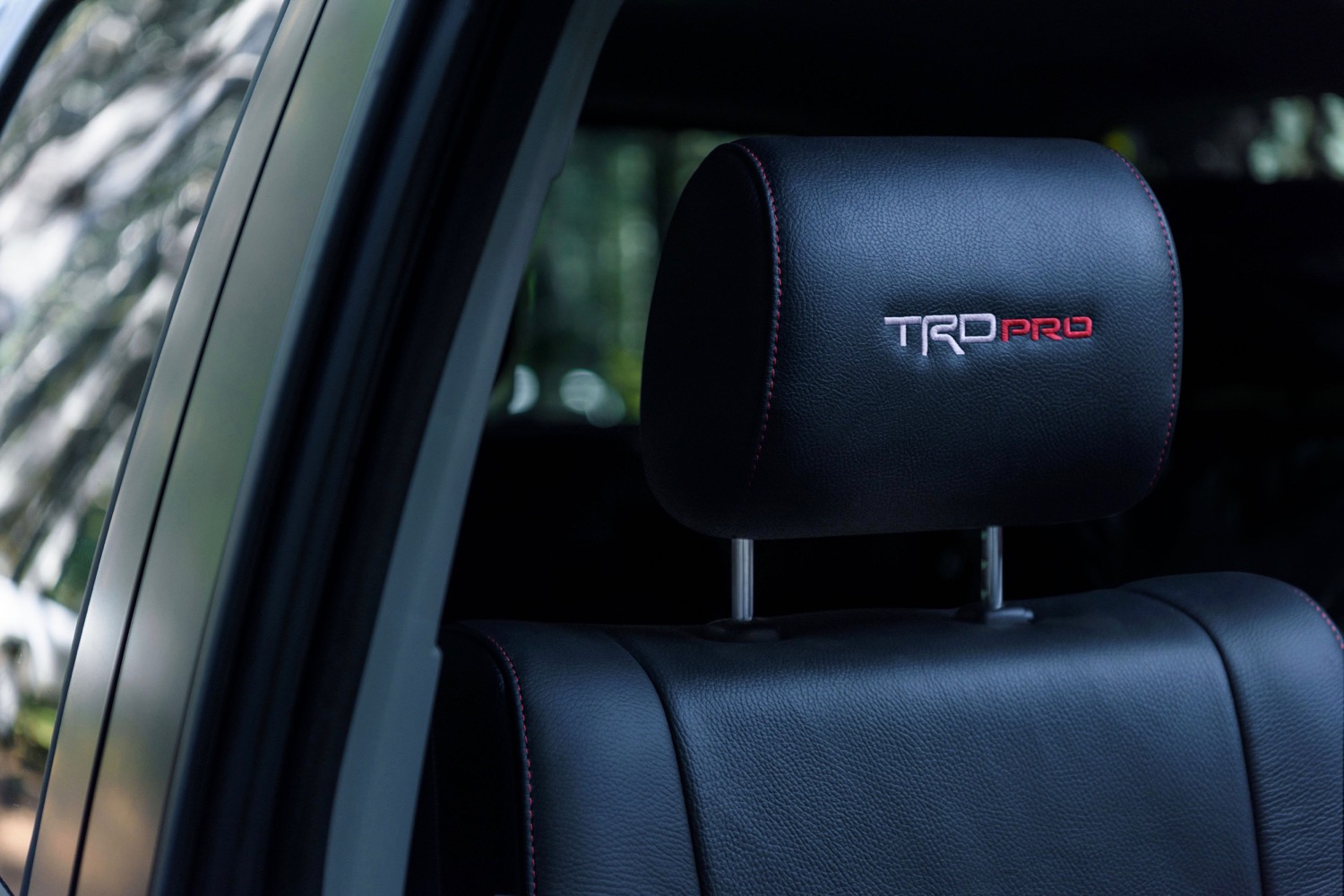The TRD Pro line adds an extra dose of off-road capability to existing Toyota models. At the 2019 Chicago Auto Show, Toyota is giving a new vehicle the TRD Pro treatment. The 2020 Toyota Sequoia TRD Pro joins off-road versions of the Tundra, Tacoma, and 4Runner in the Japanese automaker’s lineup.
The seven-seat Sequoia is Toyota’s answer to the Chevrolet Tahoe and Ford Expedition, although the current version is much older than its American counterparts. As an aging, plus-sized family SUV, the Sequoia does not seem like the most obvious choice for an off-road model. But the Sequoia also shares underpinnings with the Tundra pickup truck, which already has a TRD Pro variant. That meant similar upgrades could be made to the Sequoia relatively easily.
As with the other TRD Pro models, the upgrades include a set of Fox Racing shock absorbers. The shocks feature an internal-bypass setup, which helps resist bottoming out on trails without compromising on-road ride comfort, according to Toyota. The Sequoia TRD Pro also gets model-specific wheels and tires, a front skid plate to protect the oil pan and suspension while off-roading, and a new grille and roof rack. An optional cat-back exhaust system is also available.
Like all Sequoia models, the TRD Pro is offered with just one powertrain. A 5.7-liter V8 produces 381 horsepower and 401 pound-feet of torque. It’s coupled to a six-speed automatic transmission with standard four-wheel drive. The Sequoia’s old school four-wheel drive system includes low range and a locking center differential so, unlike many modern SUVs, this Toyota really can leave the pavement behind. The Sequoia also gets a host of standard driver aids, including: adaptive cruise control, lane departure warning, automatic high beams, blind spot monitoring, and rear cross traffic alert.
The rest of the TRD Pro line gets some updates for the 2020 model year as well. They will be among the first Toyota models to get Android Auto, as well as Apple CarPlay and Amazon Alexa connectivity. The Tundra, Tacoma, and 4Runner TRD Pro models get an 8.0-inch touchscreen, while the Sequoia gets a 7.0-inch screen. The Tacoma TRD Pro also gets a new camera system that allows the driver to select views from the front, side, rear, around, or even underneath the truck.
TRD is short for Toyota Racing Development, an organization responsible for most of the Japanese automaker’s North American racing activities. TRD has multiple Baja 1000 off-road race victories to its credit, and currently manages Toyota’s NASCAR program. So it’s not just a name Toyota made up and slapped on the side of trucks and SUVs. It played a role in developing the Supra, too.
The 2020 Toyota Sequoia TRD Pro hits showrooms later this year, with pricing to be announced closer to launch. It debuts at the 2019 Chicago Auto Show alongside the refreshed 2020 Tacoma pickup truck.
Editors' Recommendations
- Off-roading in a plug-in Jeep is like hiking with A/C
- 2020 Toyota 4Runner goes off road with more safety and tech features
